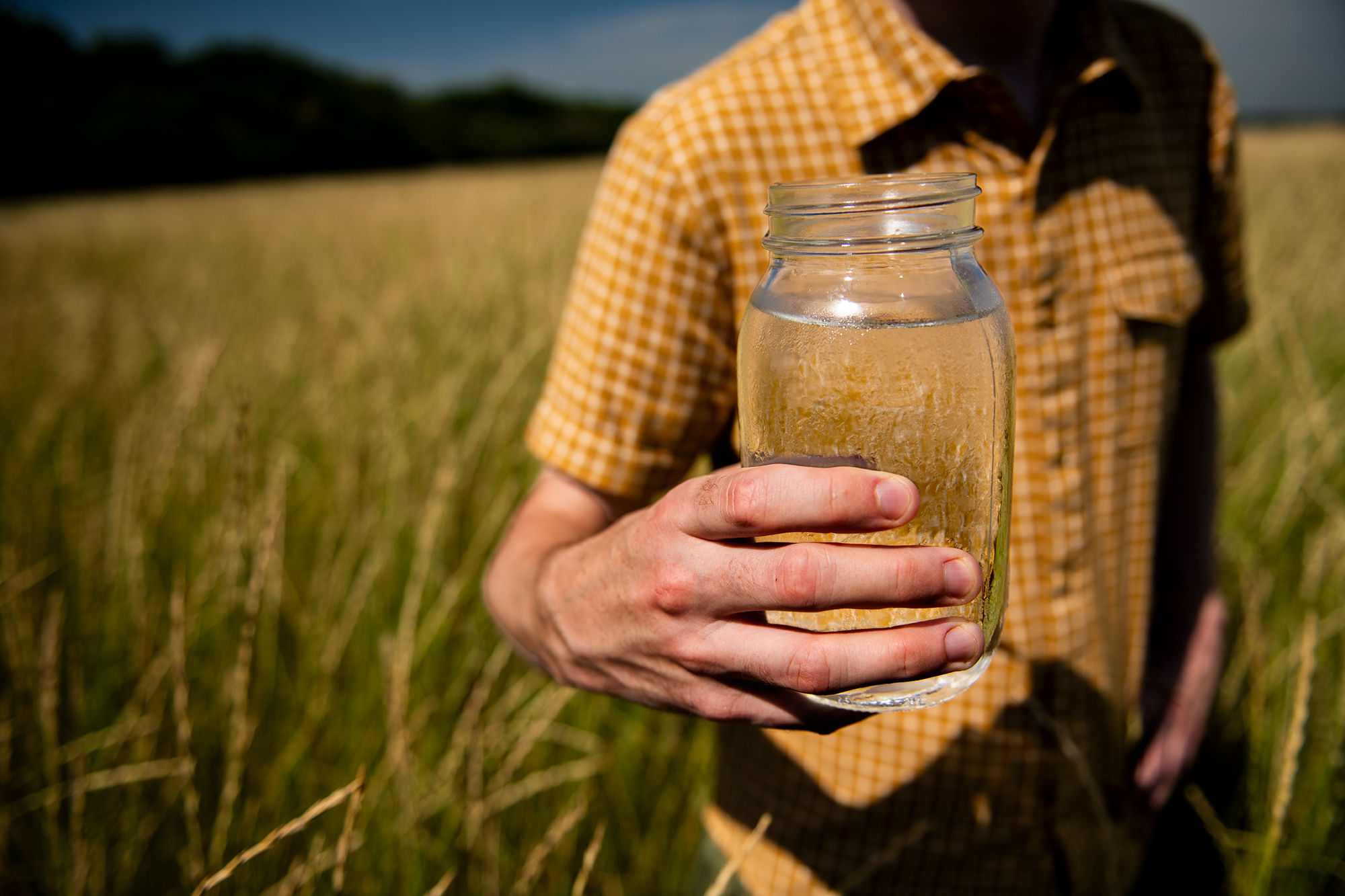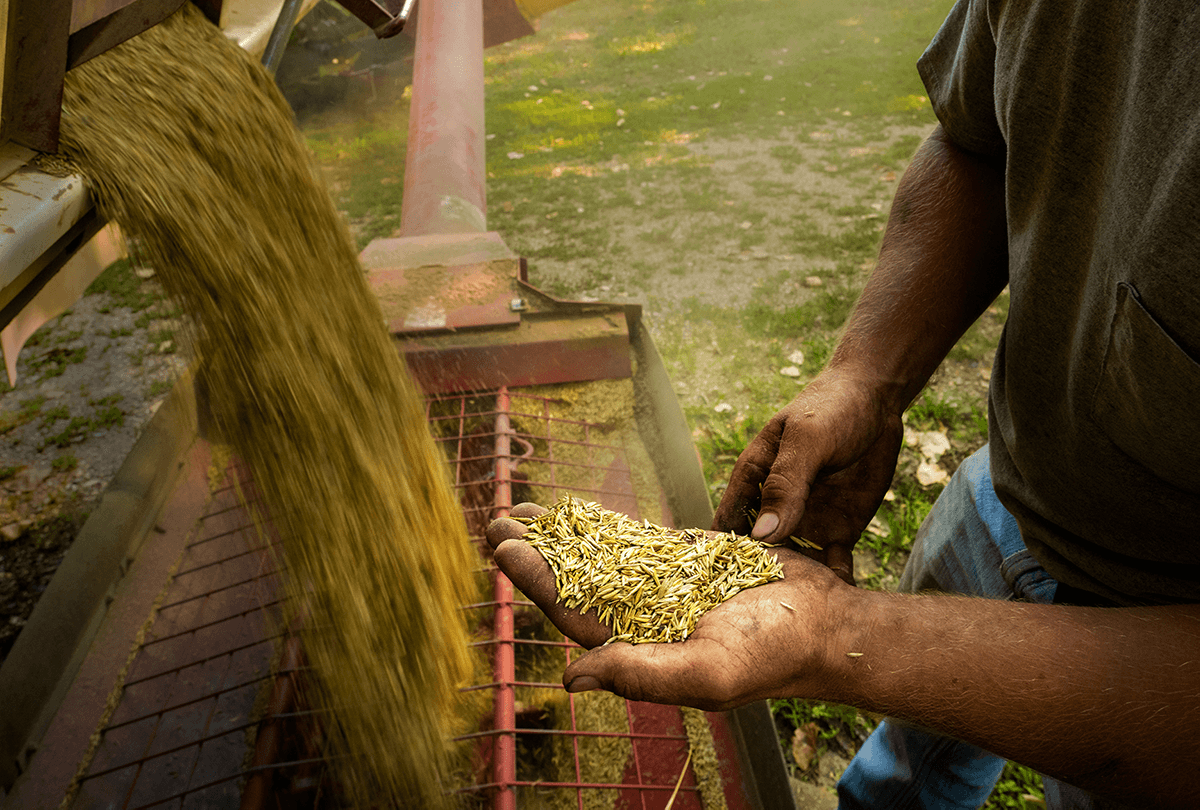Is Minnesota doing enough to protect our drinking water?

We believe clean, safe drinking water is a right for all Minnesotans. That's why we're urging the state to improve and finish nitrate pollution cleanup plans for the communities that need it most. (Photo by Dodd Demas)
A recent headline in the Star Tribune said it all: "Little action so far on plan to enlist farmers to clean up polluted groundwater in Minnesota."
As the article noted, it's been four years since Minnesota adopted its long-overdue Groundwater Protection Rule. But the state has published only three of the first 20 plans to help communities protect drinking water from elevated nitrate levels.
Meanwhile, some Minnesota communities continue to suffer.
FMR’s work to protect our drinking water
While 25% of Minnesotans get their drinking water from surface waters (including the Mississippi River), about 75% of the state's population gets its drinking water from public and private wells.
Many of these wells are susceptible to nitrate contamination from cropland fertilizers, which can make the water unsafe to drink. We know that high nitrate levels in drinking water can cause the potentially fatal blue-baby syndrome in infants, while some research links nitrate with broader health concerns (as cited in this recent MinnPost article).
The U.S. Environmental Protection Agency standard for nitrate in drinking water is 10 parts per million — roughly equivalent to a drop of water in a 10-gallon bucket. Unfortunately, some Minnesotans are living with that level of contamination. About 10% of private wells in vulnerable areas are unsafe to drink, including some townships where preliminary data shows that 30% to 40% or more of private wells are contaminated.
In addition, at least 537 public water supply wells across the state have elevated nitrate levels.
Along with our River Guardians, FMR advocated for developing the state's long-awaited Groundwater Protection Rule. This rule, which passed in 2019, protects public health and drinking water by addressing nitrate fertilizer contamination in Minnesota’s groundwater.
How the Groundwater Protection Rule works
The Groundwater Protection Rule is designed to meet the goals of the state’s 1989 Groundwater Protection Act, which directed the Minnesota Department of Agriculture to prevent cropland pollution of groundwater. There are two parts to the rule:
Part 1, which mainly protects private wells, prohibits the application of commercial nitrogen in the fall or on frozen fields in areas with vulnerable soils, including coarse-textured soils, karst geology or shallow bedrock — all of which make it easier for nitrogen to reach groundwater. This interactive map shows the portions of the state protected by Part 1 of the rule.
Part 2, which mainly protects community (public) water supplies, went into effect in July 2019. Part 2 of the rule applies only to the small portion of cropland acres (less than 3%) located inside specified community wellhead protection zones called "Drinking Water Supply Management Areas."
Under Part 2, the department of agriculture uses monitoring data to determine if wells are at risk and how severe that risk is to public health. The agency assigned the appropriate “mitigation level” for each at-risk community in 2020. For communities with lower mitigation levels, the rule promotes voluntary best management practices. If pollution persists, common-sense regulatory requirements come into play.
A disappointing start to implementing Part 2 of the Groundwater Protection Rule
When the Minnesota Department of Agriculture began implementing Part 2 of the rule, the state assigned mitigation levels to 20 communities and pledged to develop mitigation plans in each community.
Now years later, the state has issued just three cleanup plans — to Adrian, Verndale and Hastings. While COVID-related delays are a factor, it's fair to say that the process of developing these plans is frustratingly slow.
The more significant issue is that the plans that have been released appear to be little more than a cookie-cutter list of baseline conservation practices that are unlikely to move the needle on drinking water safety for at-risk communities.
The cleanup plans rely on fertilizer recommendations that prioritize profit instead of public health. They don't offer alternative strategies to traditional nitrate application approaches. And they leave out essential information that would help the public understand the process.
Clean-water crops and continuous living cover systems are key to providing a dramatic long-term reduction in fertilizer pollution while enhancing overall farm prosperity — but the cleanup plans don't even mention them.

Cover crops and deeper-rooted perennial crops (such as Kernza, pictured here) have an important role to play in reducing erosion and pollutants like nitrates and phosphorous. They act as a filter, preventing fertilizer from contaminating local aquifers or wells, ditches, streams and, eventually, the Mississippi River. (Photo by Dodd Demas for FMR)
Our recommendations on how to improve implementation
We understand why the Minnesota Department of Agriculture is being cautious. As FMR noted in a Star Tribune article in 2019, the long-awaited rule is a timid step for water quality but a giant leap for the Minnesota Department of Agriculture’s willingness to address agricultural fertilizer pollution. Recklessly rushing into implementing this rule is not in anyone’s interest.
However, going too slowly is perhaps even more troubling. After years of inaction, communities and residents remain at real risk. These are our families, friends and neighbors. For example, in July, the town of Ellsworth had to warn residents not to share tap water with infants due to elevated nitrates in the well water.
We have to do better. And we can’t afford to wait 50 years to get to clean water. Over the coming months, we’ll reach out to the department of agriculture to recommend some next steps for improving the implementation of the Groundwater Protection Rule.
1. Assign mitigation levels to all at-risk communities.
Ten water systems in the state with elevated levels of nitrates are considered “delayed for good cause” and are yet to receive their assigned mitigation level. The Minnesota Department of Agriculture must make every effort to complete the data evaluation process and assign an appropriate mitigation level as quickly as possible. If additional resources are necessary, those funds should be a priority for the department during the next legislative session.
2. Significantly improve the existing plans.
The first three sets of cleanup plans are lacking. The Minnesota Department of Agriculture should revisit these plans and consider robust alternative strategies, clean-water crops and continuous living cover systems, and greatly enhance transparency and process detail.
3. Complete the remaining cleanup plans.
Cleaning up groundwater will take many years. But developing the plans to do so doesn't need to take that long.
Join us to advocate for safe drinking water
Minnesota's groundwater didn’t become contaminated overnight; the solutions will take time.
That said, the people of Minnesota deserve strategies that are developed promptly and ambitious enough to set us on a course to achieving clean water goals on a reasonable timeline.
FMR and our River Guardian advocates will continue to push for precisely that, so that all our communities can count on safe, clean drinking water.
Become a River Guardian
Sign up and we'll email you when important river issues arise. We make it quick and easy to contact decision-makers. River Guardians are also invited to special social hours and other events about legislative and metro river corridor issues.